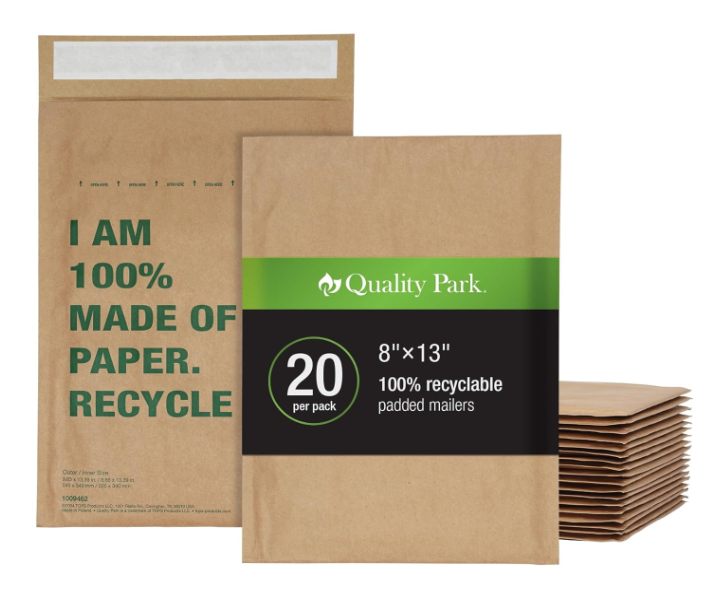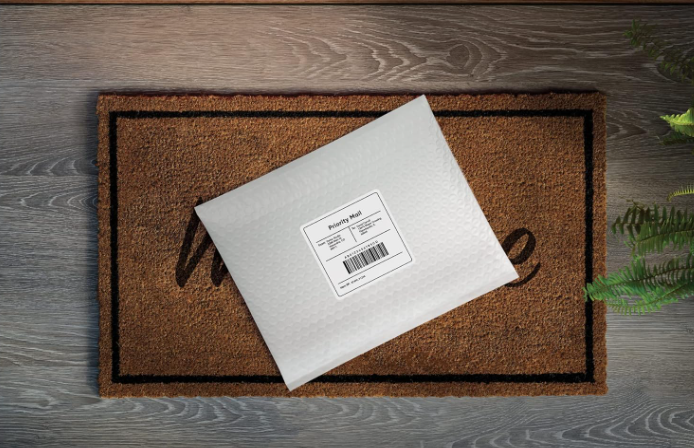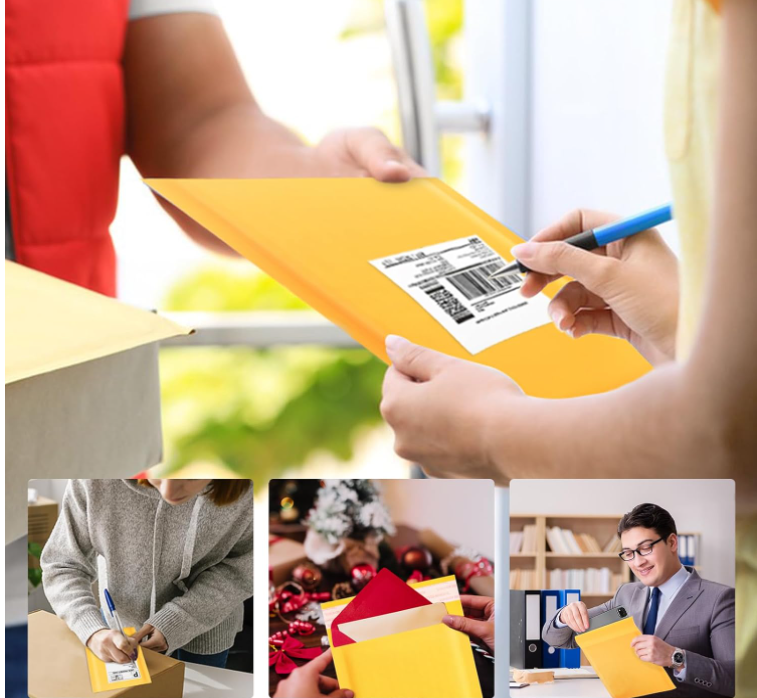Padded Envelopes: The Lightweight Solution for Secure Shipping
In today's highly developed e-commerce logistics landscape, ensuring the safe arrival of goods while controlling packaging and shipping costs is a challenge every e-commerce seller must face. Bubble envelopes, as a lightweight and cushioning packaging option, have become a preferred option for shipping small and medium-sized items such as books, clothing, and electronic accessories.
Leveraging a deep understanding of material properties and market demand, MTPAK provides customized bubble envelope services for numerous brands, combining protection, cost-effectiveness, and brand image. This article will provide a comprehensive understanding of common bubble envelope types, their applicable scenarios, and how customization can enhance brand value.
What is the basic structure of padded envelopes?
Padded envelopes, as the name suggests, are a type of packaging with an inner bubble cushioning layer and an outer envelope structure. Their standard construction typically consists of three components:
Outer load-bearing surface material: typically made of kraft paper or polyethylene (PE) plastic film, provides tear resistance and a printed surface.
Middle cushioning material: bubble padding, made of low-density polyethylene (LDPE), traps air within uniform bubbles, creating a resilient cushioning layer to absorb shock and vibration during transportation.
Inner sealing coating: Kraft bubble envelopes have a PE coating on the inner layer, enabling them to be quickly sealed by heat-sealing equipment, ensuring the integrity of the package and preventing theft.
This combination of rigidity and flexibility achieves an excellent balance between weight, security, and cost.
What are the mainstream types of padded envelopes on the market?
Bubble envelopes can be categorized into the following types based on the outer layer's material and characteristics, suiting various application requirements.
Kraft Paper Bubble Envelopes: A Balanced Choice of Sturdiness and Eco-Friendliness
This is the most classic and common type. Its outer layer is made of tough kraft paper, offering excellent tear and abrasion resistance, effectively protecting the contents from minor scratches.
Suitable for: Shipping heavy goods requiring protection, such as books, documents, CDs/DVDs, medications, and small cosmetics.
Advantages: Relatively professional appearance, easy to print brand information on the surface, and somewhat recyclable (requires separation of the kraft paper and plastic bubble layers).
Polyethylene (PE) Plastic Bubble Envelopes: Extremely Lightweight and Fully Waterproof
These bubble envelopes are made of polyethylene plastic, with the inner and outer layers seamlessly connected.
Used for: Shipping moisture-sensitive or inherently fragile items such as clothing, textiles, and lightweight accessories.
Advantages: Extremely lightweight, helping to save on shipping costs; excellent water- and moisture-proof properties, making them weatherproof; and generally lower costs.
Waterproof Kraft Bubble Envelopes: An All-Arounder with Upgraded Performance
These envelopes are based on traditional kraft paper envelopes, but feature a waterproof PE film or coating. They combine the durability of kraft paper with the waterproofness of plastic.
Used for: Outdoor equipment, moisture-sensitive documents, high-value goods requiring moisture protection, and e-commerce packages shipped in rainy seasons or regions.
Advantages: High tear resistance and effective protection against brief periods of rain and moisture; the appearance retains the texture of kraft paper.
Recyclable Bubble Envelopes: Responding to the Sustainable Trend
These envelopes have emerged in response to tightening environmental regulations and shifting consumer preferences. They typically use a single plastic material (such as a full PE structure, including a bubble layer) or kraft paper made with recycled content.
Suitable for: Brands targeting environmentally conscious target customers, such as DTC beauty brands, sustainable apparel, and cultural and creative brands.
Benefits: They simplify the recycling process for consumers and provide brands with a strong environmental marketing proposition.
Frequently Asked Questions (FAQ)
1.Which is better, Kraft paper bubble envelopes or PE plastic bubble envelopes?
There's no absolute good or bad; it's just about suitability. Kraft paper is sturdier, easier to write on and print on, and looks more professional; PE plastic is lighter, more waterproof, and generally less expensive.
2.Are bubble envelopes recyclable?
It depends on the material. Traditional kraft paper bubble envelopes require the outer kraft paper layer and the plastic bubble layer to be recycled separately; envelopes made entirely of PE can be recycled as plastic film in some areas. It's recommended to clearly mark the packaging with recycling instructions.
3.My product has sharp corners. Will bubble envelopes effectively protect it?
For products with sharp corners, bubble envelopes offer limited protection. It's recommended to wrap the corners with cardboard before placing them in bubble envelopes, or consider using sturdier paper boxes.
4.How do you determine the necessary bubble layer thickness?
It depends on the fragility and weight of the product. For general merchandise, a standard bubble layer is sufficient; for more fragile or valuable items, thicker bubble layers are recommended.
Conclusion
Bubble envelopes, though small, are a crucial touchpoint between brands and consumers, directly impacting operational costs, product safety, and customer experience. A well-considered choice, or even a meticulously customized one, can bring significant business value to a company.
As your reliable flexible packaging partner, MTPAK not only offers a full range of standard bubble envelopes but also specializes in providing one-stop customized solutions tailored to your product characteristics, brand identity, and budget—from material combination and structural design to brand printing.
MTPAK is a provider of customized flexible packaging solutions, offering a wide range of customized services. Please contact us if you require assistance:
Email:account@mtpak.com
Contact us:https://mtpak.com/contact-mtpak




